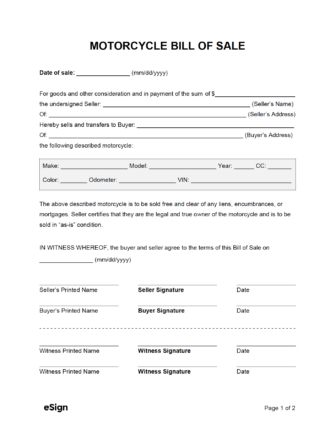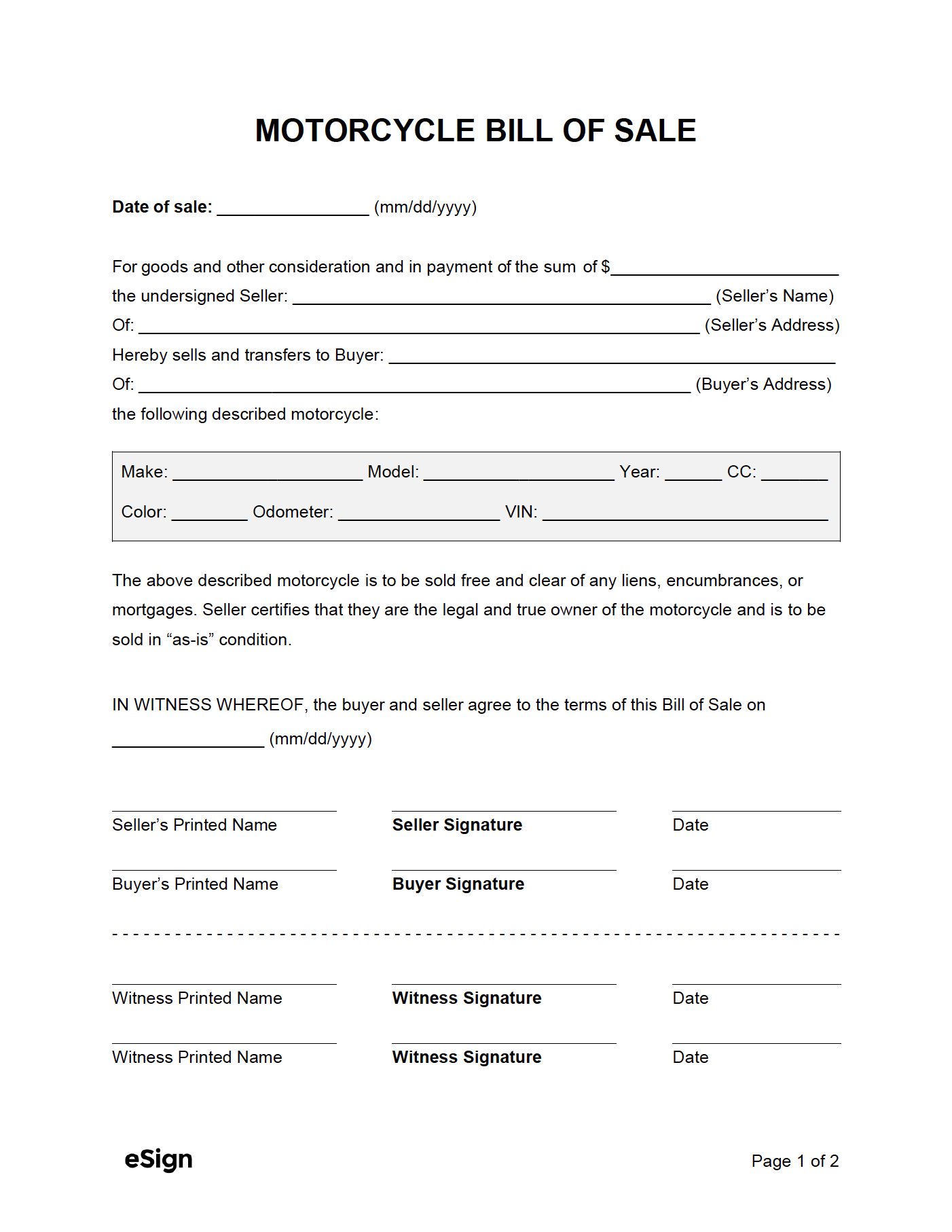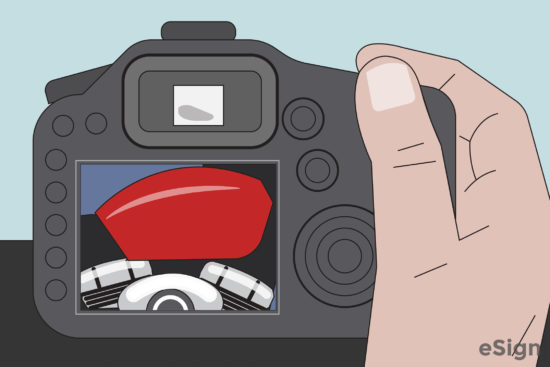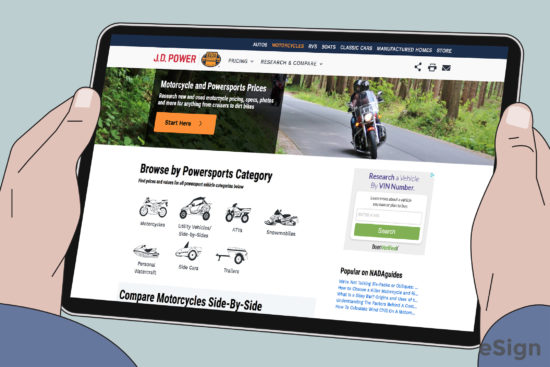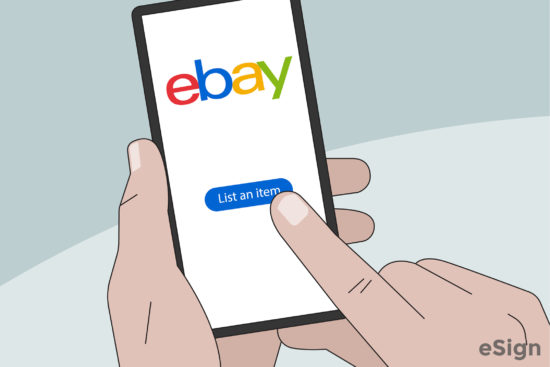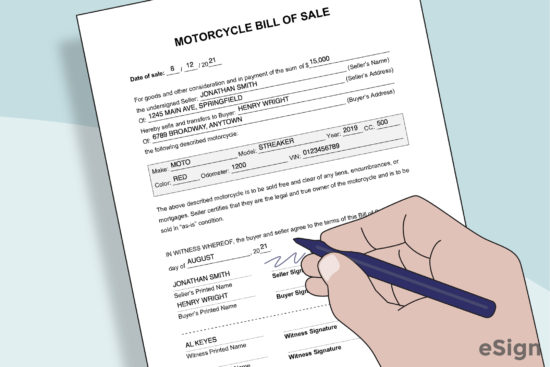What is a Motorcycle Bill of Sale
A motorcycle bill of sale proves that a buyer paid a monetary sum in exchange for ownership rights to a motorcycle. The form, in addition to the bike’s title, is required to register the newly acquired vehicle.
The bill of sale will only be viewed as valid if it contains the electronic or handwritten signatures of both parties.
How to Sell a Motorcycle
Step 1 – Prep It
Prior to listing the motorcycle, it should be cleaned and checked for damage or mechanical issues. Having an inspection done prior to listing will increase buyer activity significantly, as an inspection sticker is seen as a badge confirming the vehicle is in riding condition.
Step 2 – Take Pictures
Photos should be taken from all angles of the bike, including close-up pictures of the tires, chain, gauges, and any damage/scratches/dents. Any areas of wear and tear or damage should be shown; being upfront and honest will make the selling process easier.
Step 3 – Set the Price
The market for motorcycles is strongest in the spring and summer months. Kelley Blue Book Motorcycles and J.D. Power – Motorcycles, along with the online market places in the next step, are good resources for determining a price point.
Step 4 – List it Online
Listing the motorcycle online can be done for free or inexpensively on the following marketplaces:
Step 5 – Show + Negotiate
Once interested buyers start replying to online ads, the seller can set up viewing appointments and, if they are comfortable with it, let them take the bike for a test ride.
If an offer is made, the parties can negotiate the sale price and other terms before completing a bill of sale.
Step 6 – Complete the Paperwork
Once the parties reach an agreement, the buyer must pay the seller. Payment should take place prior to signing the bill of sale. The seller must provide the title and completed bill of sale to the buyer.
Both parties must sign their names on the document (either by hand or online with eSign). Once money has changed hands and the bill of sale has been signed, the transaction is complete.
Registration Fees: By State
Sample
Download: PDF, Word (.docx), OpenDocument
MOTORCYCLE BILL OF SALE
Date of sale: [MM/DD/YYYY]
For goods and other consideration and in payment of the sum of $ [SALE PRICE], the undersigned [SELLER NAME] (Seller) of [SELLER ADDRESS] hereby sells and transfers to [BUYER NAME] (Buyer) of [BUYER ADDRESS] the following described motorcycle:
Make: [MAKE]
Model: [MODEL]
Year: [YYYY]
CC: [CUBIC CAPACITY (#)]
Color: [COLOR]
Odometer: [#]
VIN: [#]
The above-described motorcycle is to be sold free and clear of any liens, encumbrances, or mortgages. Seller certifies that they are the legal and true owner of the motorcycle, which is to be sold in “as-is” condition.
IN WITNESS WHEREOF, the Buyer and Seller agree to the terms of this bill of sale.
Seller Signature: ______________________________ Date: _______________
Buyer Signature: ______________________________ Date: _______________
How to Write a Bill of Sale for a Motorcycle
- Date, Price, and Parties – The parties must provide the date that the bill of sale is being completed, the sale price of the motorcycle, and their respective names and addresses.
- Vehicle Information – The seller must enter the vehicle’s make, model, year, CC (cubic capacity), color, odometer reading, and VIN.
- Signatures and Notarization – The signatures of the seller and buyer must be inscribed along with the date. If the parties want to have a notary public acknowledge the signatures, they should only sign when instructed to do so by the notary.
